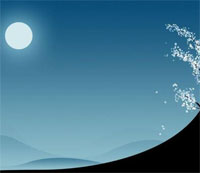Dongzhi-Winter Solstice Festival
Dongzhi (冬至) reflects the changing of seasons. As early as 2,500 years ago during the Spring and Autumn Period (770-476 BC), the Chinese scientists had determined the point of Winter Solstice by observing the movement of the sun with a sundial. It was the earliest of the 24 seasonal division points. The day falls between 21 and 23 according to the Gregorian calendar.
On this day, the northern hemisphere experiences the shortest daytime and longest nighttime. After Winter Solstice, days will become longer and nights shorter. According to ancient Chinese philosophy, the "yang," or positive, will gradually become stronger after this day, while "yin," or the negative, becomes weaker.
Festival:
The Winter Solstice turned into a festival in the Han Dynasty (206 BC- AD 220) and thrived in the Tang and Song dynasties (618-1279). The Han people regarded Winter Solstice as a "Winter Festival," so officials organized various celebrating activities. On this day, both officials and common people would have a holiday. The army was stationed in, frontier fortresses closed, business stopped and travelers took a rest. Relatives and friends treated each other with delicious food. In the Tang and Song dynasties, the Winter Solstice was a day to offer scarifies to the Heaven and ancestors. Emperors went to the suburbs to worship the Heaven, while common people offered sacrifices to their deceased parents or other relatives. There was a record in Qing Dynasty (1644-1911) that "Winter Solstice is a formal holiday as the Spring Festival," indicating the importance of this day.
Custom:
As a tradition, people in north China eat dumplings on this day, believing that this will keep them away from frost in the upcoming winter; in south China, the whole family would get together to have a meal made of red beans and glutinous rice to drive away ghosts and other evil things. In some other places, people eat stuffed small round dumplings made of glutinous rice flour. Pyramid-shaped dumplings made of glutinous rice wrapped in bamboo or reed leaves are used as sacrifices to ancestors, or gifts for friends and relatives. Taiwanese people still keep the custom of offering nine-layer cakes to their ancestors. They make cakes in the shapes of chicken, duck, tortoise, pig, cow, or sheep, animals of auspiciousness, with glutinous rice flour and steam them in a multi-layer pot. People of the same surname or family clan would gather together in their ancestral temples to worship their ancestors.
